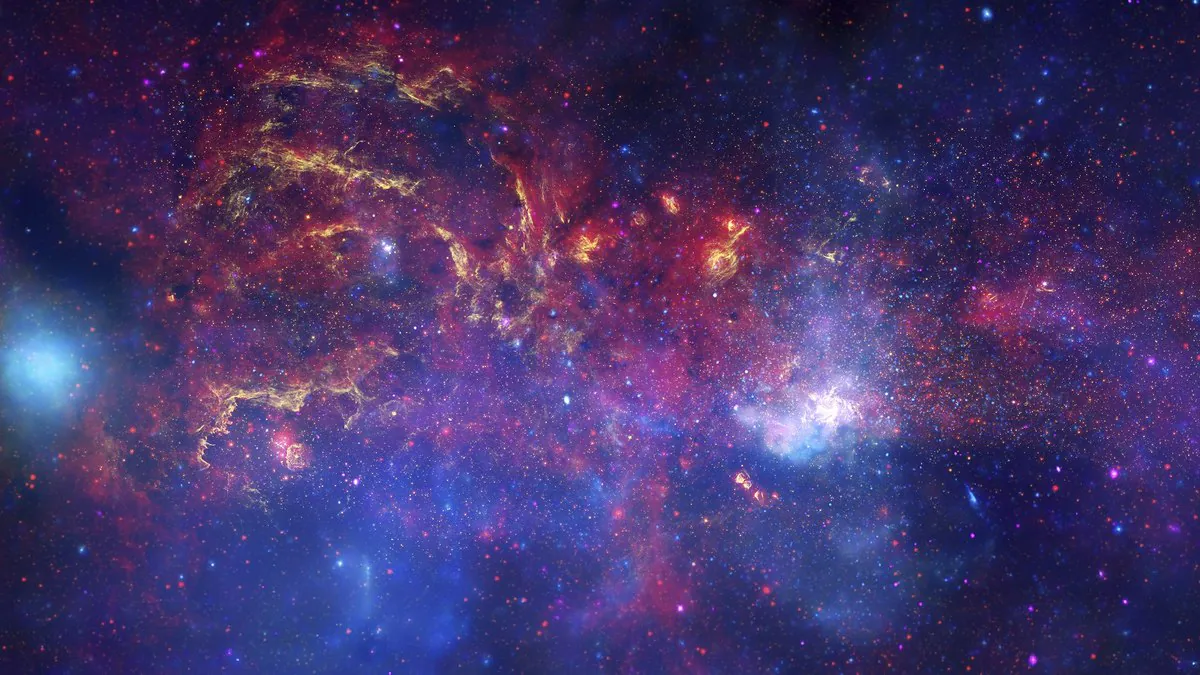
The study, led by Dr. Indranil Banik of the School of Physics and Astronomy at St Andrews, found a high predicted velocity of the gas in a dwarf galaxy, consistent with a previously refuted theory known as Milgromian Dynamics (MOND). An earlier study of the gas velocity in the dwarf galaxy AGC 114905 showed that the gas rotates very slowly, and stated that the MOND theory is dead.
Such theories are necessary for understanding our universe because, according to known physics, galaxies rotate so fast that they must fly apart. MOND, a controversial alternative to the prevailing General Theory of Relativity – Einstein-inspired understanding of the phenomenon of gravity, where dark matter holds galaxies together – does not require dark matter. Since the dark matter has never been discovered, despite decades of painstaking research, various theories have been put forward that explain what holds galaxies together and the controversy over which one is true. The very low speed of rotation reported by Mancera Pina et al is inconsistent with predictions in the General Theory of Relativity with a large amount of dark matter.
Dr. Banik’s group argues that the high predicted rotation speed in the MOND gravity theory is consistent with observations if the inclination of the galaxy is overestimated.
The rotation of stars and gas in distant galaxies cannot be measured directly. Only the component along the line of sight is known from precise spectroscopic measurements. If the galaxy is viewed almost face-on, then it would mostly rotate within the plane of the sky. This could mislead observers into thinking that the galaxy is actually rotating very slowly, which would require them to overestimate the inclination between disk and sky planes. This inclination was estimated from how elliptical the galaxy appears.
In a new study, this important issue was explored using detailed MOND simulations of a disk galaxy similar to AGC 114905 made at the University of Bonn by Srikanth Nagesh and instigated by Pavel Kroupa, a professor at the University of Bonn and Charles University in Prague. The simulation shows that it may seem a bit elliptical, even if you look at it face-on. This is because the stars and gas in the galaxy have gravity and can be drawn into a slightly non-circular shape. A similar process causes spiral arms in disk galaxies, which are so common that they are often called spiral galaxies.
As a result, the galaxy may be much closer to the viewer than observers thought. This could mean that the galaxy is rotating much faster than reported, relieving the load from MOND.
Dr. Banik, lead author on the new study, said: “Our simulations show that the inclination of AGC 114905 might be significantly less than reported, which would mean the galaxy is actually rotating much faster than people think, in line with MOND expectations.” Dr. Hongsheng Zhao, of the School of Physics and Astronomy at the University of St Andrews, said: “The very low reported rotation speed of this galaxy is inconsistent with both MOND and the standard approach with dark matter. But only MOND is able to get around this apparent contradiction.”
A new study also argues that such a “fake inclination” effect is unlikely to occur under the Standard Approach to Dark Matter, because the galaxy is dominated by a smooth halo of dark matter. Stars and gas have little effect on gravity, so the disk is not “self-gravitating”.
This means that it is likely to look very circular when viewed face-on, as evidenced by simulations of another group. As a result, the observed ellipticity should be due to the significant inclination between the disk and the planes of the sky. In this case, the speed of rotation will be very low, which means that there is little dark matter in the galaxy. From this point of view, it is impossible for an isolated dwarf galaxy to have such a small amount of dark matter, given how much mass it has in the form of stars and gas.
Pavel Kroupa, Professor at the University of Bonn and Charles University in Prague, said of the broader context of these results: “While MOND works well in the tests conducted so far, the standard approach causes very severe problems on all scales ranging from dwarf galaxies like AGC 114905 all the way up to cosmological scales, as found by many independent teams.”
You can also help Ukraine fight with Russian occupants via Savelife or via an official page of the National Bank of Ukraine.
Read also:
View Comments
Theory of Rotation produces dark matter/energy needs no physical proof of existance as a concept of gravity.So,present hypothesis(theory) due to MOND has to compĺy with or to explain this.Thanks to the authors.